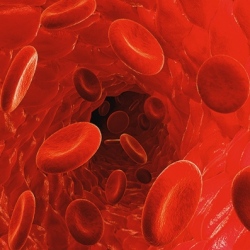
Research from Alphabet life science company, Verily, and Google shows that one day there might be a far easier test to determine risk of heart disease. Researchers were able to find new indicators of heart disease risk present in pictures of retinas by analyzing them with artificial intelligence, according to a paper.
Doctors today rely heavily on blood tests to determine risk of heart disease; a potential test based on retinal images would be less invasive, easier to obtain, and faster to analyze with AI.
While mainstream medicine has found a number of signals that indicate heart disease on retinal images, the Google and Verily algorithm was able to find indicators of age, gender, whether the patient smoked, blood pressure, and information about the level of sugar in a person’s blood on its own.
Then after analyzing how those traits influenced future cardiovascular attacks, Google claims the system nearly matched the accuracy of a standard test for estimating the risk of heart failure, the European SCORE system. That system uses data from a blood test.
While Google claims that its test was comparable to the SCORE test, the paper doesn’t contain results for a standard equivalency test based on the outcome, which would indicate whether AI truly was as good as a doctor. It’s worth noting again that the paper hasn’t been reviewed or accepted by any accredited journal, and Alphabet stands to benefit greatly if it can develop new software for indicating heart disease risk without needing to take a blood sample.
One author on the paper, Lily Peng, made headlines last year for similar research using retinal images, except using AI to detect blindness associated with diabetes.
The Google and Verily experiment used data from nearly 300,000 people, but the data largely came from just two different places. The paper notes that the dataset is mainly composed of white and hispanic patients. The authors caution that while the system achieved good results, a dataset of less than 300,000 patients is still small for AI, and should be tested further.
